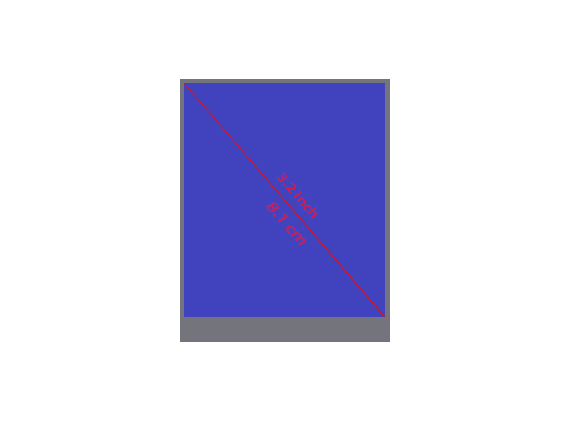Specification Selection Guide for 3.2 inch TFT Display
Due to its moderate size, the 3.2 inch TFT display is favored in various application fields such as small industrial equipment, handheld testing instruments, beauty devices, smart homes, and consumer electronics.

Here, we will implore parameters such as resolution, size, driver IC, and interface type to help users better understand and select the 3.2 inch TFT display modules display module suitable for their applications.
Resolution:
The 3.2 inch TFT display is most commonly of portrait mode, with the most common resolution of 240x320 pixels. Some products also support higher resolutions, such as 320x480 pixels and 480x800 pixels.
Landscape mode specifications are less common, for example with the resolution of 320x240 pixels.
Size:
Taking the most common specification of a 3.2 inch TFT LCD of 240x320 pixels as an example, its AA size is approximately 48.60(H) * 64.80(V)mm. For a resolution of 480x800 pixels, the AA size is approximately 41.76(H) * 69.60(V)mm. The display module's outline dimensions may vary depending on the specific display module structure.
Viewing Angle:
For 3.2 inch TFT LCDs with resolutions of 240x320 and 480x800 pixels, both TN mode and VA/IPS mode are available. TN mode typically has a viewing angle in the 6:00 or 12:00 direction, with a range of up to 70° (left/right/up/down) or specific viewing angles provided. IPS mode offers a wider viewing angle range, usually up to 80° (left/right/up/down), suitable for applications requiring a wide viewing angle.
Brightness:
The brightness range of a 3.2 inch TFT module could be customized depending on the product's application requirements. Brightness levels such as 250~300cd/m², 400~500cd/m², and 800~1000cd/m² are available.
Driver IC:
The common driver IC models for 3.2 inch TFT displays include ST7789, ST7793, or HX8357 (optional). Users need to consider factors such as driver IC compatibility, performance, and cost when making a selection.
Interface Type:
3.2 inch TFT displays support multiple interface types, such as SPI, MCU, and RGB. The specific interface may vary depending on the product, for example, MCU 8/9/16/18bit, SPI+RGB16/18bit, etc. Users need to select the appropriate interface type based on the device's motherboard interface and transmission speed requirements.
Touch Solution:
The touch method is one of the important ways for users to interact with the display screen. 3.2 inch TFT displays support resistive touchscreens or capacitive touchscreens (optional). Resistive touchscreens are controlled through pressure sensing, suitable for multiple touch methods such as fingers and styluses; while capacitive touchscreens work by sensing the human body's electrical current and only support finger operation. Users need to select the appropriate touch method based on the device's application scenario and user needs.
For example, our company's existing standard 3.2 inch TFT LCD module, Model# FT-03212, is a 3.2 inch 240*320 IPS TFT LCD, using the ST7789VI driver IC, supporting 4-SPI interface , connnected by by 12-PIN FPC. The module surface brightness is up to 700cd/m², supporting sunlight readablity. The standard module is not designed with a touchscreen yet, but it could be paired with a touchscreen according to customer needs.
Shengfeng Technology, is a professional LCD display manufacturer, offering diverse 3.2-inch TFT modules, such as 3.2 inch 240*320 TFT LCD, 3.2 inch 240*320 IPS TFT LCD, 3.2 inch 480*800 TFT LCD, and 3.2 inch 480*800 IPS TFT LCD. Our company can also provide customized solutions according to customer requirements to meet users' specific needs, designing and customizing based on requirements such as device size, resolution, brightness, viewing angle, driver IC, interface type, and touch method.
In summary, selecting the right 3.2 inch TFT display module requires consideration of multiple factors, including resolution, size, viewing angle, brightness, driver IC, interface type, touch method, and customization options. Users need to comprehensively consider these factors based on the device's application scenario and user needs to select the most suitable display module.